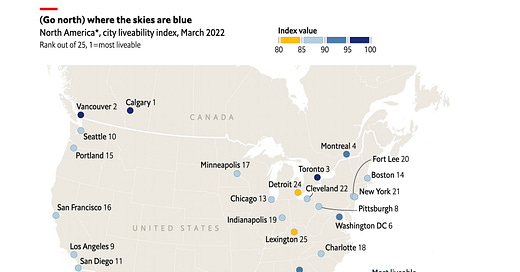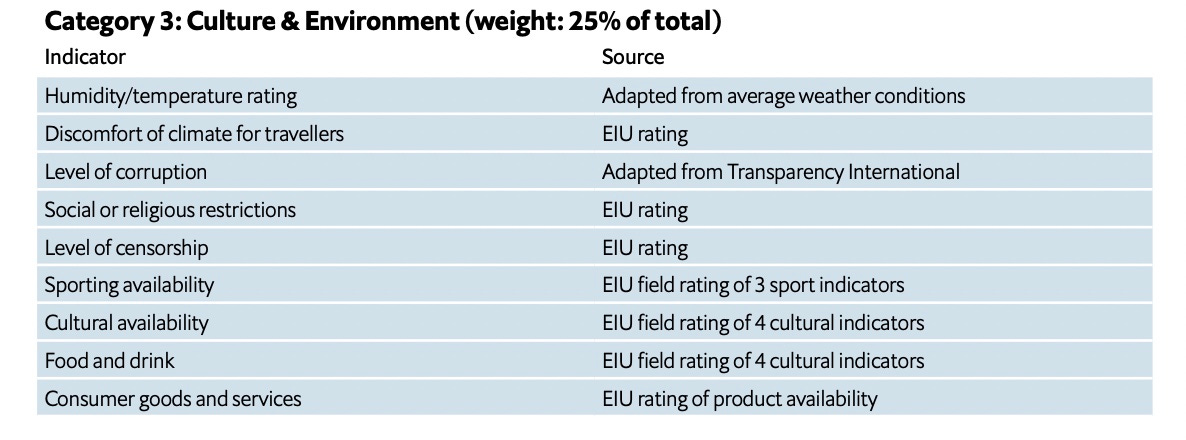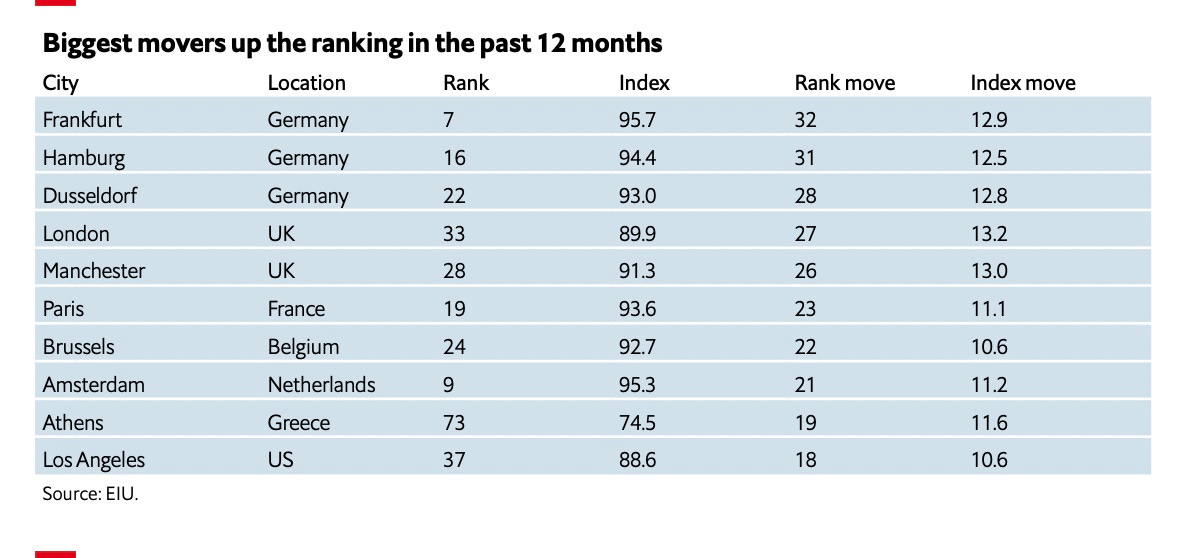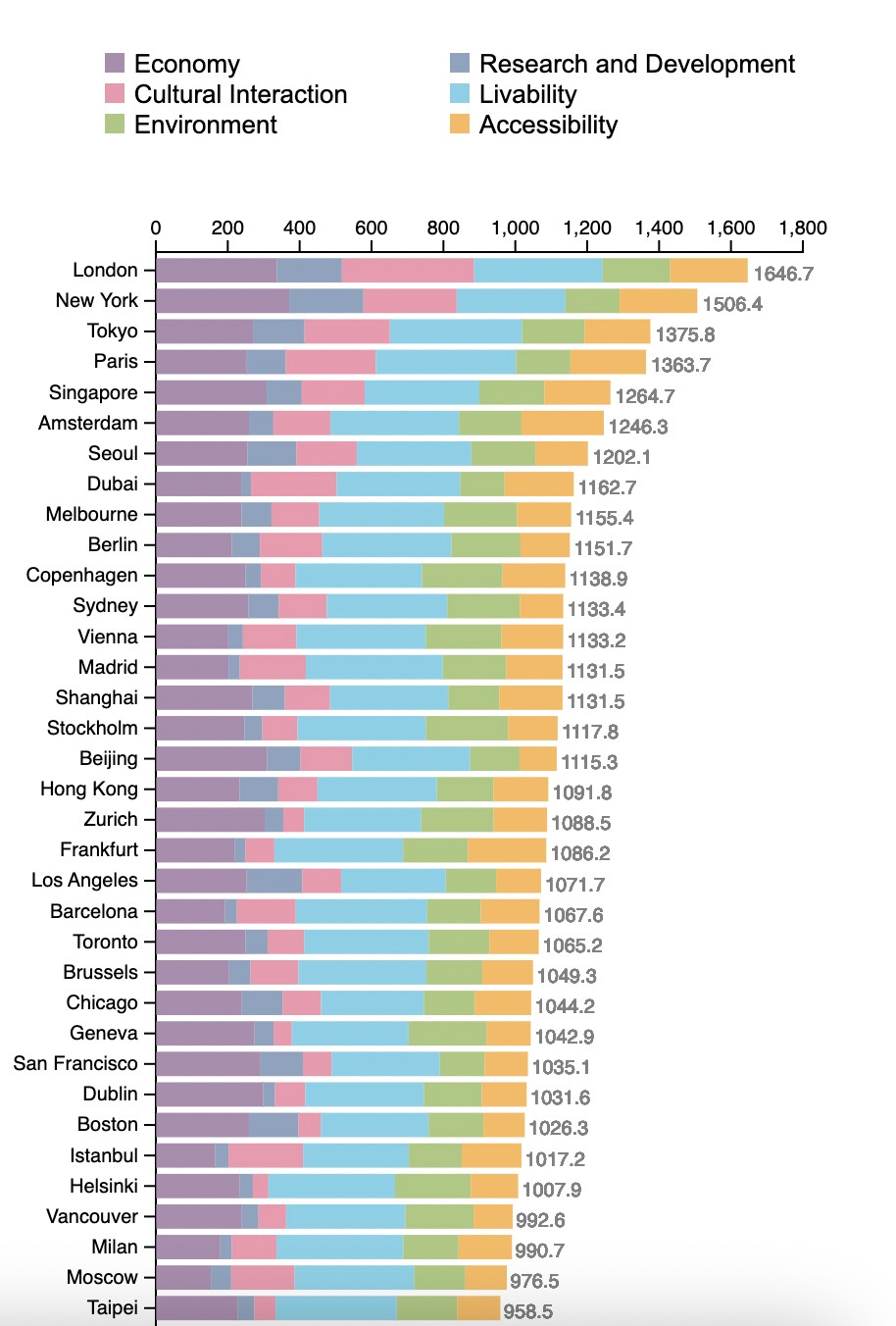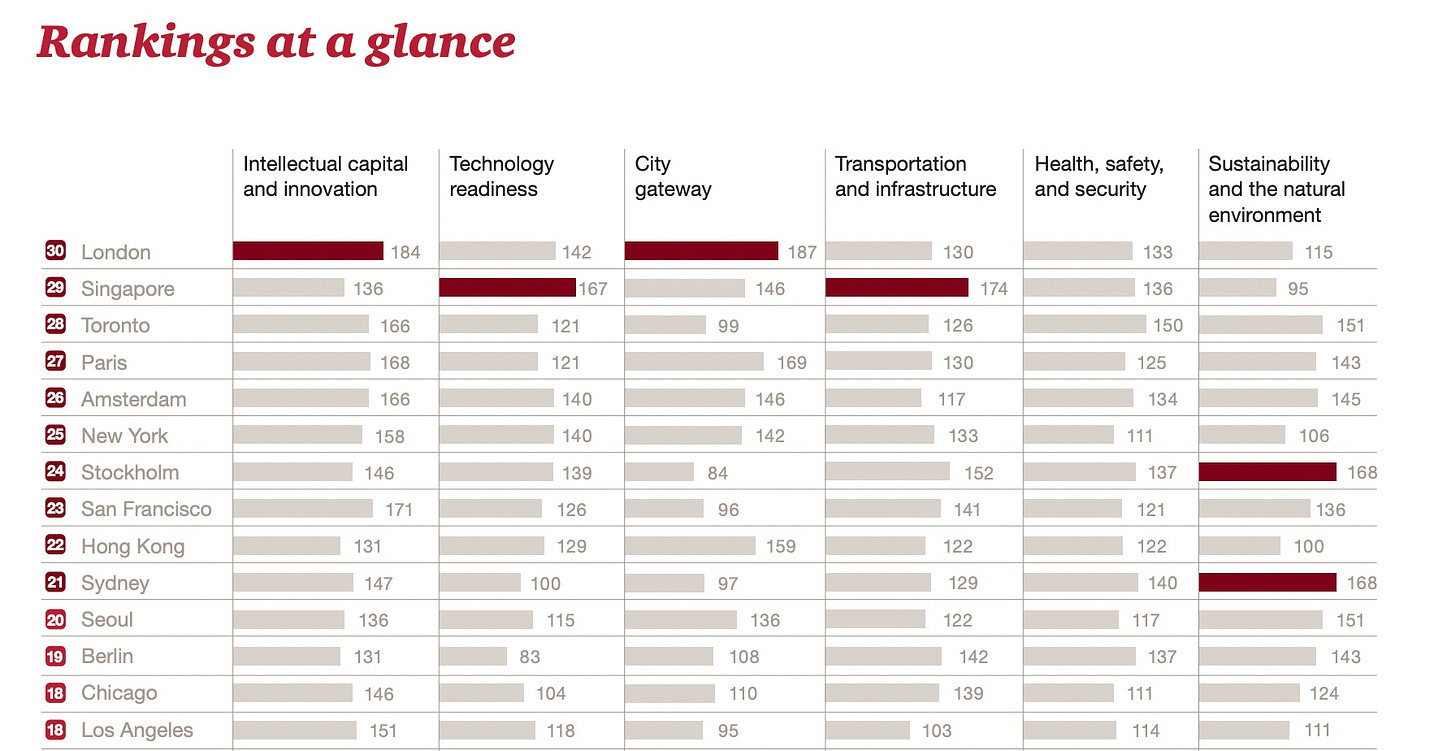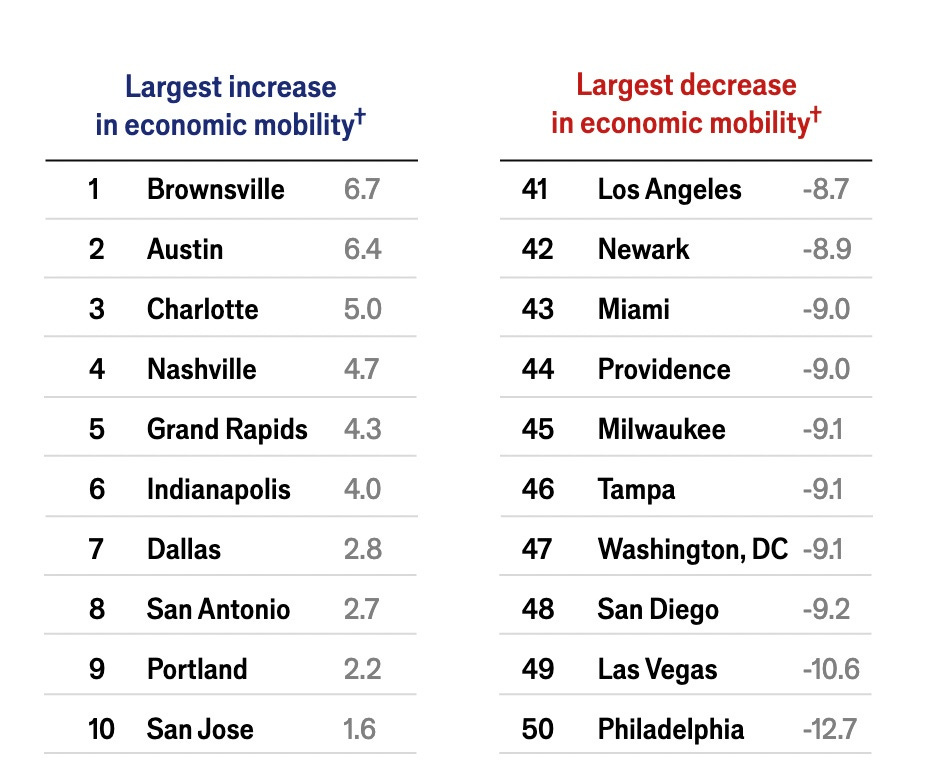The Resilience of Los Angeles as a Global City
Quote of the Week
“The economy as a whole is much less sensitive to rates than it used to be because so much debt is fixed at low rates for long periods, both for mortgages and big companies. Companies have been pouring money into building new factories despite the Fed, thanks to government subsidies.” (September 2024 WSJ)
Are Global City Rankings Significant to LA’s Future?
The rise of global cities has been linked with two globalization-related trends: the expansion of the role of transnational corporations in global production patterns paired with the decline of the mass production system (think the Ford assembly-line model), and the increase of flexible production centers within urban areas.
For some time, the automotive, aerospace, electronics, pharmaceutical, and medical device manufacturing sectors in the United States have adopted flexible systems to enhance production efficiency and regulatory compliance.
These trends continue to shape the development of networks in certain cities that now serve transnational corporations' financial and service requirements and highlight the struggles other cities are having with deindustrialization.
The Biden administration has done an incredible and overlooked job directing investments in the areas that show the most promise in the United States to reverse some of these trends.
From our years of studying and paying attention to LA’s economy, we can say that the region has remained pretty resilient in the face of many global shifts, lackluster jobs, and economic growth in comparison to our peers.
To better inform our thinking, we decided to dive further into what the world’s top researchers on global cities are thinking.
The Economist Magazine’s sister company EIU ranks living conditions in the top cities around the world and this year’s rankings (2024) highlighted that the world’s fastest climbers showed upgrades in social services and infrastructure, transport investment, doctor-patient ratios, and school enrollments.
The full 2024 study costs $8,000 to view!
So we went back to the available 2022 data and found that researchers took into account more than 30 factors related to education, culture, the environment, health care, infrastructure, and stability. Los Angeles was one of the biggest climbers from the prior year, rising to ninth place from 15th for North American cities, thanks to big gains in the culture and environment category.
And overall, when you include all global cities, LA jumped up 18 spots!
In the summary of the 2024 data we were able to see on LA, we noted a slight decline in the rankings: right and darker dots rank higher. Takeaway - LA is resilient but continues as a work in progress.
2022
2024
The Global Power City Index (GPCI) evaluates and ranks the major cities of the world according to their “magnetism,” or their comprehensive power to attract people, capital, and enterprises from around the world. It does so by measuring 6 functions—Economy, Research and Development, Cultural Interaction, Livability, Environment, and Accessibility—providing a multidimensional ranking. LA settled into 21st place. The chart below shows LA’s strengths and what we need to work on.
Another ranking we have followed for the past decade has been the Cities of Opportunity Report by PWC. The 2024 rankings are listed below. (Each city’s score is the sum of its rankings across variables. The city order from 30 to 1 is based on these scores.)
Note the higher marks on ‘intellectual capital and innovation’ as a reminder of the importance of our creative economy. LA data continued below…
One of the first PWC reports from 2008 showed an interesting stat that most likely no longer holds up in LA as the rise of outmigration continues. This is an interesting data point leaders should continue to address.
Los Angeles has done relatively well despite itself.
We should congratulate ourselves on over a decade of tens of billions of dollars in capital investments into our physical infrastructure (LAX, ports, rail, stadiums, environment, etc.), and the growth of our institutions of higher ed, progress in tech and innovation, and ability to attract tourists and foreign investment.
But this work in progress is only a start to reaching the upper echelon of being ranked a top global city and the resources it brings to all who live there.
Fifty-five years ago, Jane Jacobs wrote in the closing of The Death and Life of Great American Cities, “Cities contain the seeds of their own regeneration…”.
Using PWC’s graph, we can see where exactly we need to plant more seeds…
Seed One
A recent study by Raj Chetty, of Harvard University, with his colleagues showed that those born in 38 of the 50 most populous cities in 1992 had lower salaries by the age of 27 than those born in 1978, when adjusted for inflation. Cities have long been places of opportunity but in America, the prospects for many children born to low-income families in urban areas is trending in the wrong direction.
Brownsville, whose population is 95% Hispanic, grew because of the copious economic opportunities they have.
Big things matter - modernizing airports, ports and building stadiums, and hosting the Olympics are incredibly rare opportunities, but they do not matter much if the little things get overlooked.
Exhibit A - Steve Lopez’s recent columns speak for themselves. The most powerful quote was from Victor Williams, a neighborhood resident who talked about visiting MacArthur Park with friends.
“He can’t fathom all the destructive behavior, the trashing of the grounds, and the wide-open drug activity. He referred to whoever was responsible for the fires as ‘savages’…Nobody speaks on it,” said Williams, disgusted by the silent acceptance of civic dysfunction.”
LA’s private, public, social, and civic leaders are doing a commendable job working to address the many challenges LA faces and must continue to force the debates needed on how to allocate the right resources to mitigate our challenges and solve our problems.
And more is needed from what Peter Drucker called our “society of organizations”, the public sector organizations in which the work of federal, state, and local government is carried out; the private sector organizations, established to meet the economic needs and wants of citizens; and the social sector (sometimes referred to as nonprofit) organizations that care for those health and welfare needs of citizens that are not met fully by either the public or private sectors.
For a society to function well, it’s thought that organizations should be single-purpose institutions that work together to leverage their resources toward positive change.
If the institutions of our pluralist society do not perform with responsible autonomy, we will not have individualism and a society in which there is a chance for people to fulfill themselves.
Where is the silver lining for now?
The continued resolve of Americans (and Angelenos) to support their fellow neighbors is heartwarming.
Recent data has shown that charitable donations to individuals continue to increase with the proliferation of online sites as a conduit to provide direct cash assistance, including Paypal, Venmo, GoFundMe, and DonorsChoose. (Many of these startups were created in CA!)
This technology has made it easier to help support individuals in crisis and to get back on track with their economic mobility. GoFundMe reports that $30 billion has flowed through its site since 2010. We are willing to bet a lot of that flowed into LA’s communities…even if we are not on their rankings as the most generous city or generous state…
Just in California, DonorsChoose helped facilitate the flow of hundreds of millions of dollars to more than 6.1 million students and 260,000 teachers.
Beyond that, Giving Tuesday, an annual philanthropic event promoting charitable activities during the week after Thanksgiving annually, has found that giving to non-registered charities, including direct cash to individuals, volunteering, and in-kind donating, is more than double the philanthropy given to registered nonprofits during that week.
The power of the public, private, and social sectors is more than enough to support communities and those who live in them.
We need to keep doing better by focusing on what LA has to shore up to move forward, and we will continue to argue that we need more business-friendly policies because the cities around the world that are thriving off sound economic development initiatives are creating good-paying jobs and economic growth, which in turn generate the wealth and tax revenue needed to invest in the quality of life initiatives needed to retain and attract a diverse population.
Thank you for reading.
Michael Kelly (The Sconset Group) Deidre Lind (A Better Impact)

